A wedding is filled with many precious moments. And most of the times, these moments are to be found in the wedding ceremony – where you kiss as man and wife, when you say your vows to each other, when the groom sees his bride in her gown (presumably for the first time).
The question is what happens during a wedding ceremony? Oftentimes, when we attend weddings, we get caught up in the romantic moments that we don’t really get into the details of which part goes where, what happens during which part and so on. But when we’re planning our own wedding, it is important for us to know and understand what happens in each part of the wedding ceremony.
There are a lot of variations to a wedding ceremony. You can find many pre-set traditional wedding ceremonies or you may craft your own unique wedding ceremony. Or, you may go for a mixture of traditional with your own personal touch.
To give you an idea of what happens in a wedding ceremony, here are some of the more traditional elements:
The Entrance
– Seating of the guests. Guests, assisted by ushers, enter the wedding venue and take their seats. The prelude or pre-ceremonial music will be played during this time.
– Seating of the Parents. The groom’s parents and the bride’s mother are accompanied to their seats. If the bride opts to have her father give her away, the father would enter later with the bride.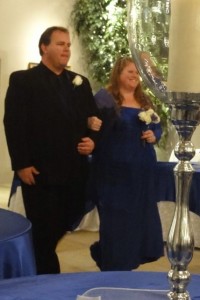
– Entrance of the groom and other attendants. The officiant, the groom and the best man either enter through a side door or also march down the aisle. Then, they take their places in front.
– Entrance of the rest of the wedding party. This includes the bridesmaids and groom’s men walking in pairs, followed by the ring bearer, the flower girls and the maid of honor. The officiant instructs everyone to rise for the Bridal march. Here, the bride enters the wedding location, usually with her father (or other close relative).
– Giving away of the bride. This is an optional part of the program, where the officiant asks who gives the bride to be married. The parents of the bride will answer, “We do.” Sometimes, in modern ceremonies, the officiant instead asks, “Who supports the couple in this marriage?” and both sets of parents will answer, “We do.” 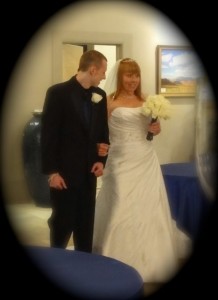
This is the “meat” of the wedding ceremony.
– Welcome remarks and statement of purpose. The officiant says welcoming words to the guests and the wedding party and states the purpose of the gathering. In some instances, the bride or the groom may wish to include a loved one or a friend who has passed away or are unable to come. This part is where they can be acknowledged and recognized.
– Charge to the couple. The officiant gives some advice about marriage and how it is to be founded not just on romantic love, but also on respect, friendship and trust. The officiant will remind the couple of the challenges and joys of married life.
– Question of Intent. This is where the officiant asks, “Do you, __________, accept ____________ as your lawfully wedded husband/wife?”. This question is asked to the bride and the groom individually and they each should answer, “I do.”
– Saying of Vows. This is where the bride and groom pledge their vows to each other. The officiant may dictate the words. One of the more common vows go,
I, _____________, take you, _____________ , to be my wedded (wife, husband), to have and to hold from this day forward; for better, for worse; for richer, for poorer; in sickness and in health; in joy and in sorrow; to love and to cherish, as long as we both shall live. I give you this ring as a sign of my promise.
The bride and groom may opt to write their own vows beforehand.
– Blessing and exchanging of rings. The officiant briefly explains the meaning of the rings and their significance in the couple’s union. The bride and groom then exchange rings.
– Optional unity ceremonies. The couple may also add a unity ceremony at this point. The most popular is the lighting of the unity candle. Two smaller candles are each held by the bride and the groom. Other unity ceremonies are the rose ceremony (where the bride and groom exchange roses) and the sand ceremony (where the bride and groom pour different colored sand to symbolize their union).
– The Pronouncement. The officiant will declare the newlyweds as officially man and wife.
– The Kiss. Another much-awaited part of the ceremony is when the couple kisses as husband and wife for the first time.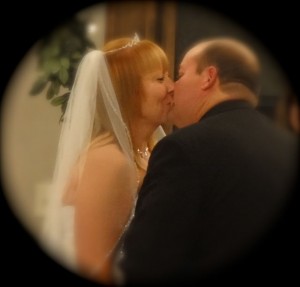
The Closing
– The Presentation. The officiant presents the bride and groom as Mr. and Mrs. The introduction depends on your preference – would the bride like to take on the groom’s last name or does she want to keep her own last name? Or, would the bride go for a hyphenated name?
– The Recessional. The newlyweds lead the wedding party down the aisle.
When crafting your own wedding ceremony, it is important to remember that this is a reflection of who you (as a couple are). The ceremony ideally reflects your values, beliefs and intentions. It is best if you and your fiancé feel comfortable with each part of the ceremony. You should also carefully consider your choice of wedding venue or SLC wedding reception center. This will provide an excellent backdrop to the beautiful wedding ceremony you have prepared.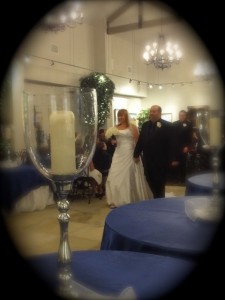
When planning a wedding in Sandy, Utah, check out Western Garden’s The Ivy House. It has all that you need for a dream wedding – a beautifully decorated hall, exquisite chandeliers giving your wedding the extra sparkle, plants, artwork and classic-style furniture. The Ivy House makes a perfect Sandy, Utah wedding venue for your dream wedding!


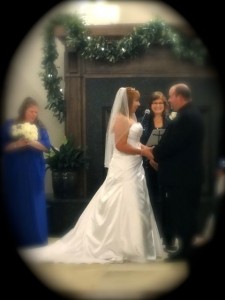
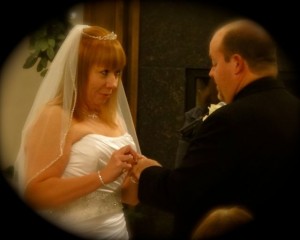
This was so helpful. Thank you